tunneling wound vs undermining
 Negative Pressure Wound Therapy and Tunneling Wounds | WoundSource
Negative Pressure Wound Therapy and Tunneling Wounds | WoundSourceThe source of trust for health information and the CONTINUED EDUCATION. Tunneling and undermining; knowing the difference Related Articles Related Products Keywords Tunneling and undermining; knowing the difference (Editor's note: The answer to this month's Wound Solutions question is provided by members of the editorial board of Wound Care Kathi Thimsen Whitaker, RN, CETN, MSN, president of Sierra Clinical & Research Associates in Carson City, NV, and Liza G. Ovington, PhD, President of Ovington & Associates in Fort Lauderdale, FL.) Kathi Thimsen Whitaker Liza G. OvingtonQuestion: What is the best way to handle a tunnel wound? Question:Answer: The handling of a tunnel wound requires first determination the extension of tunnels or handicapped. Mine clearance is less extensive, while the tunnel penetrates deeper into the tissue. Try the perimeter of the wound gently to determine the extent of the penetration. Answer: Determine whether the wound is infected or not and what is the causative The organism is. Redness, swelling, drainage, heat at the site of the wound, and complaints of pain are all signs that an infection may be present. A culture is needed to find out if the wound is infected and what underlying The cause is. The Federal Health Policy and Research Agency (AHCPR) recommends take a small sample of tissue, but there is some controversy about this method. It is invasive and costly, and subject the patient to stress. Another method, a swab culture, involves collecting a sample of the liquid inside and around the wound using a sterile cotton applicator. This It's faster and cheaper, but some say it's not that accurate. Others contend there is evidence that shows a correlation between the results of the swab cultures and tissue biopsies. Once the underlying infectious organism is identified, it can be concentrated with the appropriate antibiotic. Use of broad-spectrum antibiotics is discouraged due to the appearance of drug-resistant strains of infections agencies. The wound should be irrigated with saline at a safe pressure, which ranges from 4 psi to 15 psi, according to AHCPR. Lower pressures 4 psi won't clean the wound properly. Pressure over 15 psi, you run the risk of leading bacteria in the tissue instead of Wash them. Pack the wound loosely. You can choose from several products, such like 1/4-inch smooth gauze, alginated (which come in string shape), or 1/4 inches Gas impregnated with hydrogel. The absorption of the material will depend about how much fluid exudes the wound. Be sure to fill the entire cavity, or "dead space", which will help healing wounds without risking premature Close. The following case report can help illustrate the treatment of a tunnel wound: The patient, K.M., is an 85-year-old man with a history of stroke, Parkinson's. disease, difficulty swallowing, malnutrition and multiple pressure ulcers. An initial assessment revealed that the coccyx wound was not staggerable by the presence of necromatic tissue. Topical treatment started to remove necrosis. After three weeks of applying a debriding enzyme, A total disease wound was revealed. An evaluation of the wound showed the following: • A wound of 6.2 cm x 4.3 cm with full thickness or the intervention of the stage 4 wound. • Depth of 3.1 cm in the center. • Engraving/discovery: position of 12 in point - 2.1 cm; 1 in point — 2.1 cm; 2 stitch — 1.2 cm; 3 stitch — 2.4 cm; 4 stitch — 2.7 cm; 5 point — 3.1 cm; 6 point — 2.1 cm; 7 point — 2.2 cm; 8 point — 1.9 cm; 9 o'clock — 2.0 cm; 10 o'clock — 1.1 cm; 11 o'clock — 2.0 cm. • Note: Demining is defined as 1.0 to 1.4 cm, the tunnel as greater 1,4 cm. Here is the wound care plan used for treatment: 1. Clean the wound with Davol Pulse-Lavage and Smith " Nephew Dermal Wound Cleanser. 1.2. Packing the wound and mined/montonated areas with 1/4" Nu-Gauze saturated with Curasol Wound Hydrogel (amorph). 2.3. Apply the moisture barrier to the peripheral skin. 3. 4. Cover with a 5 x 9 Surgi-Pad. 4. Change dressing daily or plum if they get dirty. 5. The packaging technique should result in a lightly full wound cavity and other areas of participation. Use narrow gauze strips to facilitate the tunnel filling to prevent premature closure or collapse of the tunnel, which can show like the closure of the false wound and increase the potential for the formation of abscess or relapse of wound. The packing of force can lead to the ischemia of the wound caused by Intrawound pressure. [Editor's Note: Send questions you would like to answer in the future problems a: Care of the wounded, P.O. Box 740056, Atlanta, GA 30374. Or you you can fax them to the Managing Editor Glen Harris (404) 261-3964, or email us at glen_harris@medec.com. ] Write a review about this articleReport comment AbusivoRestricted content JavaScript seems to be enabled to enjoy a limited number of items in the next 360 days. Table of Contents Buy now: Search ProductsWebinars And Events The source of trust for health information and the CONTINUED EDUCATION. Applicable accounts Mailing address© 2021 Relias. All rights reserved. For inquiries or complaints about DSR, please contact Wes Vaux, Data Privacy Officer, Design, CMS, Hosting " Web Development ::
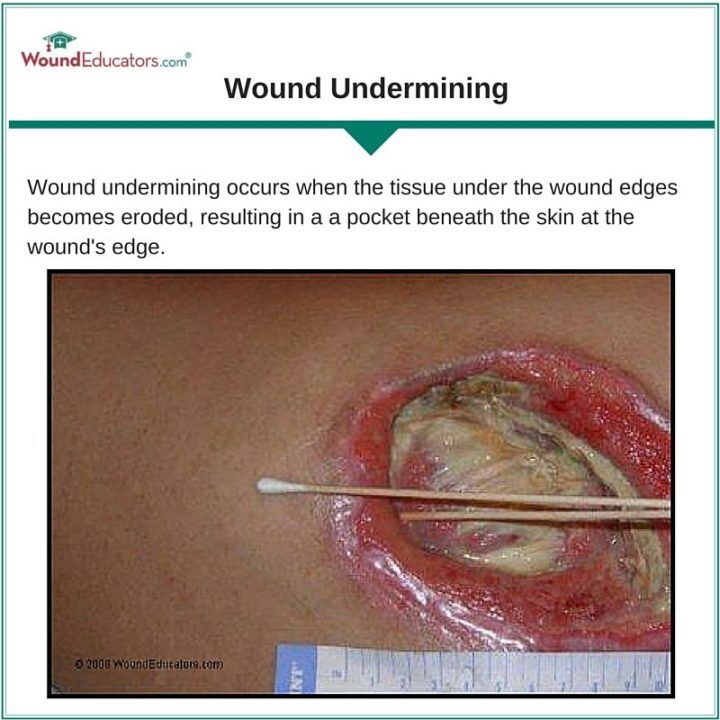
How to Measure Wound Undermining | Wound Tunnels WoundEducators
April 2020 Tunneling and Undermining

Tunneling and Undermining - Wound Care Demonstration - YouTube

TunnelingUndermining.png (803×614) | Wound care nursing, Home health nurse, Nurse
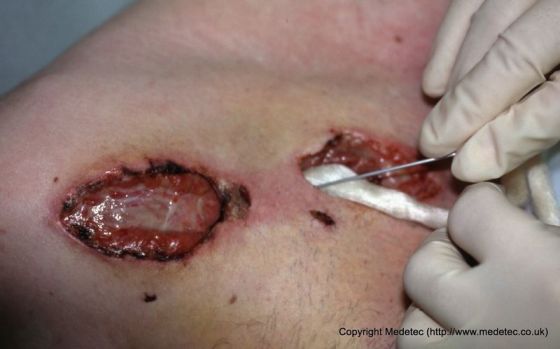
How to Assess Wounds for Tunneling and Undermining

Pearls for Practice: Wound Tunneling | Wound Management & Prevention
Special Skin and Wound Care (Client Care) (Nursing) Part 1
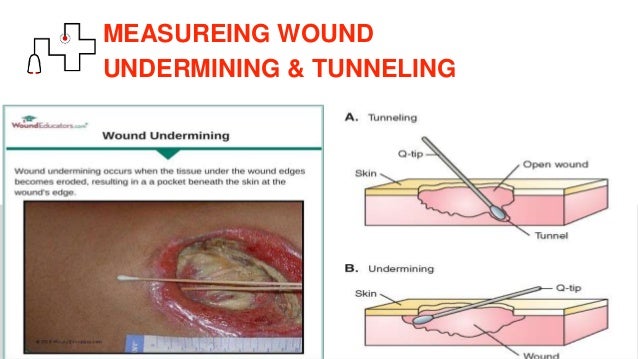
Managing Basic Wound Care in Nursing Home
Every Wound Has A Story
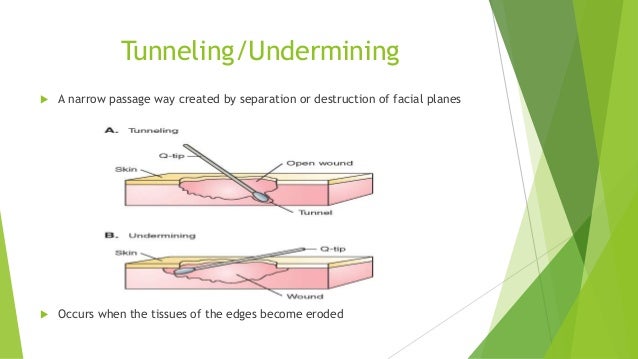
Geiger- Interdisplinary approach to wound management

Wound Care: Getting to the Depth of the Tissue || NurseCE.com

Wound Measurement- Understand Wound Care - YouTube

Surgical Management of Chronic Wounds | Wounds Research
Coloplast Wound and Skin Care na Twitteru: "It's Wound Wednesday! We're talking about two types of wounds: wounds with tunnelling and wounds with undermining. Here's where we'd like to hear from YOU!

Tunneling Wound: Causes, Treatment & Prevention
PRESSURE INJURIES & SKIN MANAGEMENT
April 2020 Tunneling and Undermining

Wound Care: Getting to the Depth of the Tissue || NurseCE.com

Tunneling Wound: Definition, Risk Factors & Treatment | Study.com

Chapter 8: Skin Integrity and Wound Care Flashcards | Quizlet

V.A.C. VERAFLO™ Therapy

Wound care

Examination and Evaluation of the Patient with a Wound | Musculoskeletal Key

Deep pressure ulcer | DIY Wound Care

Tunneling Wound vs. Undermining Wound | Study.com
Wound Measurement & Documentation Guide_final092112.indd
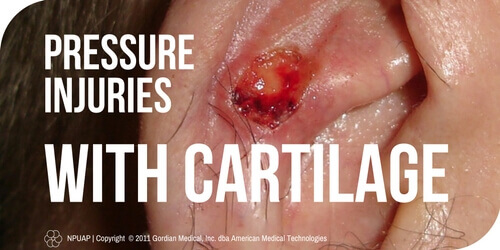
Pressure Injuries with Cartilage? Stage Away | WCEI Blog WCEI Blog
Dressing a Pressure Injury" by Susan Hamilton for OPENPediatrics - YouTube

Linking Complex Foot & Lower Extremity Care with Prevention - ppt download

The Severity Of Dermal Ulcers - Medical Supplies | Home Medical Equipment | Discount Medical Supply Store

Pearls for Practice: Treating Stage III Pressure Ulcers | Wound Management & Prevention
Wound Classification

ENLUXTRA for Any Wound BLOG - ENLUXTRA

Pressure Ulcers: Prevention, Evaluation, and Management - American Family Physician

Pressure injury | Pressure ulcer, Pressure ulcer staging, Wound care nursing
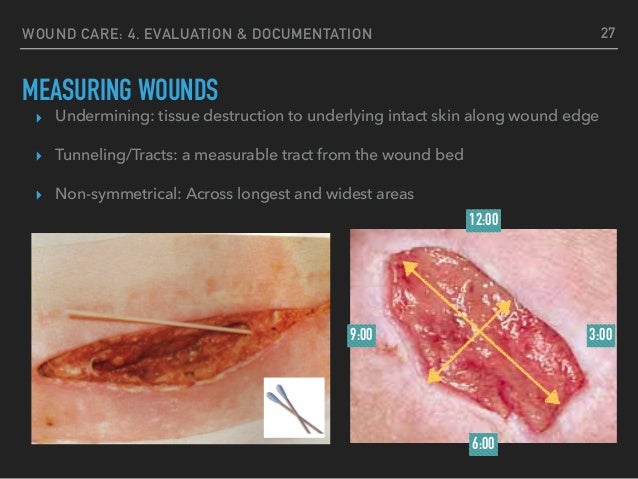
Wound care

Primary Care Approach to Wound Management - ppt download
Wound Classification
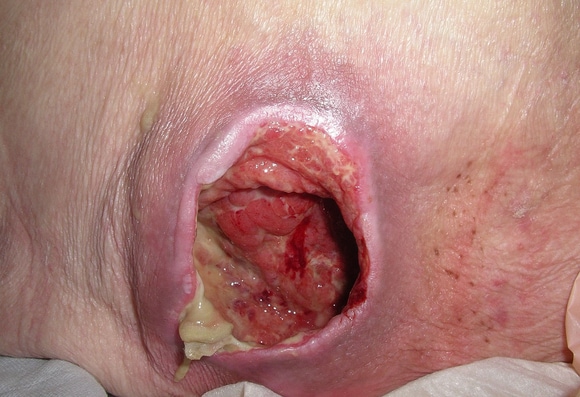
Classifying Pressure Injuries (Ulcers): 15 Cases to Test Your Skills

Undermining
Posting Komentar untuk "tunneling wound vs undermining"